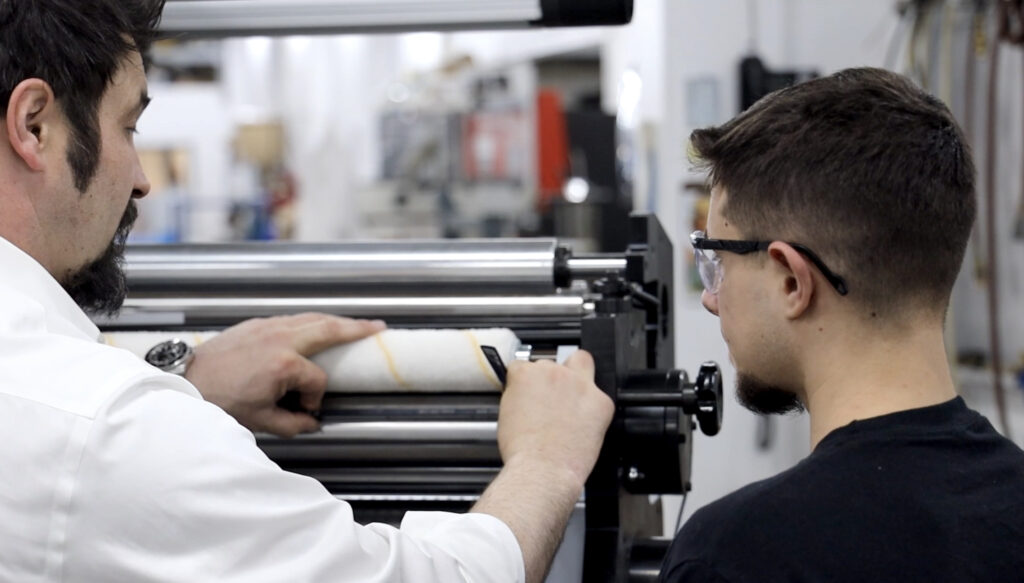Radio Frequency Identification (RFID) is a technology used to track and identify objects or people using radio waves. An RFID system is made up of three primary components: an RFID inlay, tag, or label, an antenna, and a reader device. Numerous industries have come to rely on RFID technology for accurate and efficient asset tracking of products, employees, inventory, and animals.
RFID systems provide step-by-step tracking using radiofrequency waves and wireless communication to collect, store, and transfer data. A major benefit of an RFID system is the reader device does not have to be in the direct line-of-site of the tracking item. The type of frequency band you choose for your system will determine how far away the device reader can be while reading the tags or labels.
RFID System Components
RFID software and hardware are usually the first few things that come to mind when building an RFID system. RFID Tags, RFID Antennas, and RFID Readers are commonly chosen for hardware based on their specific use applications. Additional hardware elements, such as RFID printers, could also be utilized.
The typical RFID system components include:
RFID Tag/Chip – The tag or chip stores the data collected from the reader. There are two types of RFID tags: passive and active. An active RFID tag can send data from long distances because it carries a power source internally. Passive RFID tags are powered by electricity sent from the RFID reader device and have a shorter transmission range.
RFID Antenna – The RFID antenna serves as a vital component of the RFID system because it is the primary connection between the tag or chip and the reader device. Linear and circular antennas are the two general types, with each having its pros and cons. A circular antenna will emit a circularly polarized signal, while a linear antenna will emit a linearly polarized signal. Typically, linear antennas work better for long-distance applications, and circular antennas are best suited for short-range applications.
RFID Reader Device – Information gathered from the tag is analyzed by an RFID reader, which is capable of being either mobile or fixed. RFID readers are commonly employed in theft prevention tactics and are positioned at store doors to prevent consumers from leaving with things they did not pay for. RFID mobile readers eliminate the need for line-of-sight scans by transmitting data wirelessly. They are also available as portable scanners.
RFID Inlays, Tags, and Labels
While RFID inlays, tags, and labels essentially perform the same function, there are differences between them based on their application and construction.
RFID Inlay – RFID inlays are like RFID tags, but they only contain the chip and antenna and are smaller in size. RFID inlays are designed to be used embedded into another object, like a label, card, or material. Inlays can also be active or passive and can be read from a shorter distance than a tag.
RFID Tags – RFID tags are tiny devices with a chip for data storage and transmission along with an antenna. Usually, they are integrated or affixed to an item that requires tracking, like a product at a store or an item in a supply chain. RFID tags may be read by an RFID reader from several meters. They can be active, meaning they require a battery, or passive, meaning they do not.
RFID Labels – Like RFID inlays, RFID labels include a printed surface on which barcodes, text, or artwork can be added. RFID labels are commonly employed in healthcare, retail, and logistical settings to mark and track goods. They can be either active or passive and read over a short to medium-distance range.
RFID Inlay Insertion Equipment
Specialized equipment is used by RFID converters to insert RFID inlays into tags, labels, or tickets. Tamarack® Products offers innovative solutions for RFID converters with their MVW Inline RFID inlay insertion equipment that is Servo driven and can be easily integrated into your current press.
Tamarack® Products has been leading the industry with top-quality, efficient web-finishing equipment for over 50 years. Our technical expertise and capacity to tailor converting equipment solutions to the requirements of the forms, packaging, and label-making sectors have earned us recognition on a global scale. Contact us with any questions regarding the integration of our MVW Inline RFID inlay insertion equipment to generate RFID inlays, tags, or labels.





